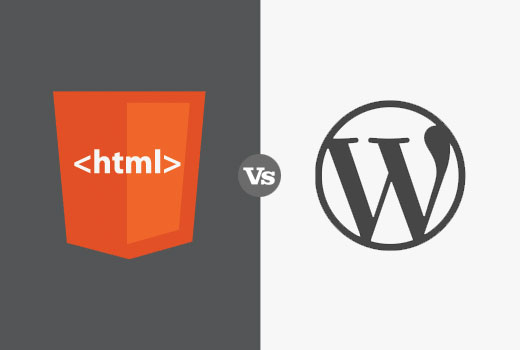What is the difference between a static website and WordPress?
A static website is a website that is delivered to the end-user exactly as is stored in the file system. WordPress or similar content management systems construct the website using templates before rendering it in the browser.

WordPress (Content Management Systems or CMS)
WordPress is an open source Content Management System (CMS) or software to create beautiful websites, blogs, or e-commerce stores. Content Management Systems allows you to manage your website from a user-friendly interface. You can make all the changes on your website from an administration area which is quite easy to understand, even for total beginners. You may need the help of a web developer during the initial set up like theme installation, configurations, database and WordPress installation on your server, but overall, WordPress is pretty easy to manage once installed on your server and a theme template has been added to the website.

WordPress administration area.
While there are many CMS out there, WordPress is the most prevalent one because it influences nearly 32% of all websites on the internet. It’s important not to confuse WordPress.org with WordPress.com. They are two different entities. WordPress, the open source CMS is available on WordPress.org. On the other hand, WordPress.com is a blog hosting service.
WordPress is easy to use and has an intuitive user interface, which makes it easy for you to add new pages, create a blog post, add a new contact form, add a new product, manage inventory, etc without any coding skills. There are numerous of ready-made template themes that you can purchase and use on your website. These themes are designed and coded by professional web developers, and you can customize them to your liking. WordPress websites can be easily extended with the use of plugins (sections of code) that are available on the official WordPress repository and other platforms like,ThemeForest, Template Monster, etc. By installing plugins, you can add any functionality such as contact forms, photo galleries, sliders, and many more to enhance your site.
Lastly, you get full control of your website, its domain name, and all its contents. You can make any customizations you want, and there are no boundaries on how much your site can grow.
Html Websites (Static Web Design)
Most websites on the internet use HTML with a variety of markup and scripting languages to create web pages. Typically you will need to hire a web developer to create an HTML website for your business. They use technologies like HTML, CSS, and JavaScript to build websites.
WordPress uses a database to collect and retrieve content. On the other hand, HTML websites have all your content in static files. Having said that; let’s take a look at the advantages and disadvantages of an HTML website.
With a static website, there is no need to install any software, make any updates or frequent backups. You can just backup your website once and forget about it. HTML websites don’t need servers with PHP or MySQL connected to them. They can run on relatively affordable servers with low properties. No updates are needed unless you know HTML/CSS/JS. Static HTML websites can be hard to update for beginners. If you don’t have any coding skills, you will need to hire a developer even for smaller tasks like adding new pages, updating old content, or uploading videos or images. The cost of an HTML website could get much higher than a WordPress website.
Bottom Line
If you are confident that you will never want to update, change, or add anything new to your website, then, by all means, go for an HTML website. It will be faster and will serve its purpose. If you want to have the freedom of updating, adding content, features, or escalate your website as your business grows then WordPress is the better choice.
By using WordPress, you will be part of a global community of businesses using WordPress to manage their online presence. You will find sufficient free help, resources, tools, and plugins to grow your business every day.
